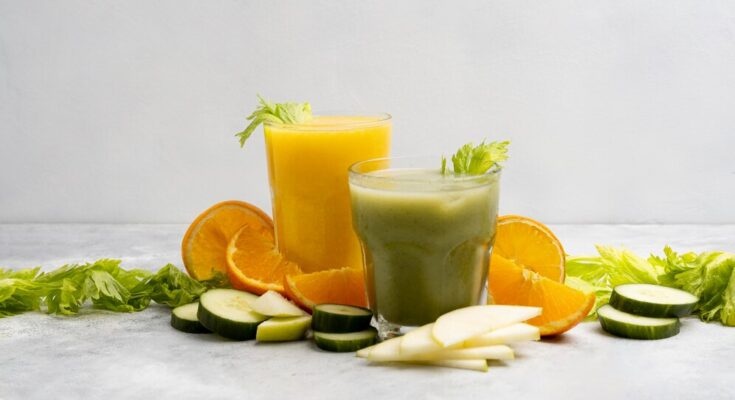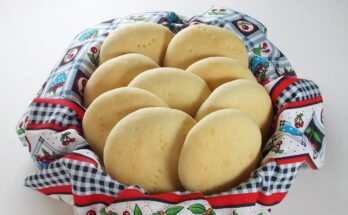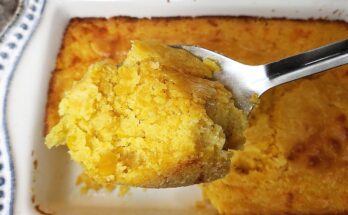Juice Recipes for Weight Loss: Want to lose weight without starving yourself or drinking bland shakes every day? Juicing might just be the secret sauce you’ve been looking for. It’s tasty, refreshing, and loaded with nutrients. And best of all? When done right, it can seriously kickstart your weight loss journey.
Juices made from fresh fruits, vegetables, and natural boosters can help detox your system, rev up your metabolism, and curb cravings. This guide will walk you through everything—from the ingredients you need to a step-by-step process, and even ten powerhouse juice recipes you can start making today.
So, if you’re ready to sip your way to a slimmer you, grab your juicer and let’s dive in!
Benefits of Juicing for Weight Loss
Juicing isn’t just a trend—it’s a proven method to flush out toxins, boost metabolism, and reduce belly bloat. Here’s why it works:
- Low in Calories, High in Nutrients: Juices provide essential vitamins and minerals without adding empty calories.
- Improves Digestion: Ingredients like ginger and lemon can soothe your gut and keep things moving.
- Curbs Hunger Naturally: Juices can suppress appetite when packed with fiber-rich veggies like spinach and kale.
- Boosts Energy & Metabolism: Certain fruits and herbs like grapefruit and mint are known to stimulate your body’s fat-burning process.
- Flushes Out Toxins: Your liver loves a good detox. Cucumber, celery, and beetroot help cleanse your system from the inside out.
So instead of reaching for processed snacks or sugary drinks, try swapping in a fresh juice. Your body (and bathroom scale) will thank you.
What Makes a Juice Effective for Weight Loss?
Not all juices are created equal. A store-bought “green juice” might sound healthy, but it can be loaded with sugar and preservatives. Here’s what separates a fat-burning juice from a sugar bomb:
- Low Sugar Content: Stick to fruits like green apple, berries, and grapefruit. Avoid high-sugar fruits like bananas and mangoes if your goal is weight loss.
- Loaded with Vegetables: Leafy greens, cucumbers, and celery offer fiber, vitamins, and minerals—without the calories.
- Power Add-Ons: Spices like ginger, turmeric, and cayenne pepper don’t just add flavor—they speed up your metabolism and fight inflammation.
- Balance of Taste and Nutrition: You want it to taste good, but also fuel your body. Use lemon, mint, or a dash of honey (sparingly) to enhance flavor without adding too many calories.
So, when mixing your juice, always keep the 70/30 rule in mind—70% veggies, 30% fruit. This way, you get all the goodness without spiking your blood sugar.
List of Essential Ingredients You’ll Need
To get the most out of your juicing routine, it helps to keep a stocked kitchen. Here’s a categorized shopping list of weight-loss-friendly ingredients:
Fruits That Burn Fat
- Grapefruit – Boosts metabolism and helps burn belly fat
- Green apple – Adds sweetness with fewer sugars
- Berries (blueberries, raspberries) – Antioxidants and low glycemic index
- Lemon and lime – Detoxifying, alkalizing, and enhances flavor
Vegetables for Detox and Digestion
- Cucumber – Hydrating, low calorie, great for skin
- Celery – Natural diuretic, helps reduce bloating
- Spinach/Kale – Packed with iron and fiber
- Beetroot – Liver cleanser and boosts blood flow
Boosters and Add-ons
- Ginger – Anti-inflammatory, improves digestion
- Turmeric – Great for bloating and fat loss
- Mint leaves – Refreshing, appetite suppressant
- Chia seeds – Adds fiber and keeps you full
- Cayenne pepper – Thermogenic spice that burns fat
- Apple cider vinegar – Stabilizes blood sugar and cuts cravings
Having these ingredients on hand makes it easy to whip up a variety of juices that don’t just taste good but also support your weight loss goals.
Tools and Equipment You’ll Need
You don’t need a fancy setup to start juicing. But having the right tools can make the process quicker and more effective.
Juicer vs Blender
- Juicer – Best for extracting pure juice and removing fiber. Great for deep detox and quick absorption.
- Blender – Keeps the fiber, making the juice thicker like a smoothie. Ideal for staying full longer.
Recommended Brands:
- Juicer: Breville, Omega, Hurom
- Blender: Vitamix, Ninja, NutriBullet
Other Helpful Tools:
- Sharp knife and peeler for prepping ingredients
- Fine mesh strainer or nut milk bag (if using a blender)
- Mason jars or glass bottles for storing juice
- Cutting board and measuring spoons for portioning ingredients
Having a well-equipped kitchen not only makes juicing more fun but also helps you stick to the habit long-term.
Step-by-Step Guide to Making Juice at Home
Juicing at home can feel intimidating at first, but once you get the hang of it, it becomes second nature. Here’s a simple, no-fuss guide to help you create your own weight-loss juices from scratch.
Step 1: Wash and Prep Your Ingredients
Start by rinsing all your fruits and vegetables thoroughly. Even if they’re organic, it’s important to remove dirt, pesticides, or bacteria. You can use a vinegar soak (1 part vinegar to 3 parts water) for 10 minutes to deep-clean your produce.
Once clean, peel and chop ingredients as needed:
- Remove seeds from apples
- Peel citrus fruits
- Cut large items into chunks that fit your juicer or blender
- If using ginger or turmeric, a small piece (1-2 inches) is enough
Step 2: Choose Your Recipe
Don’t just throw in random items. Having a plan helps balance flavor and ensures you’re getting weight-loss-friendly nutrients. (Scroll down for the top 10 recipes!)
Pick a recipe based on your goal—do you want a morning energizer, post-workout refreshment, or something to fight bloating?
Step 3: Juice or Blend
Now comes the fun part:
- If using a juicer, feed ingredients one at a time. Alternate between soft and hard items (e.g., apple after spinach) to keep the machine running smoothly.
- If using a blender, add a small amount of water or coconut water to help blend the ingredients smoothly.
Step 4: Strain (If Needed)
If you used a blender and want a smooth juice:
- Pour the mixture through a nut milk bag or fine mesh strainer into a bowl
- Squeeze out all the liquid using clean hands or a spoon
This step is optional, but it helps remove excess pulp and gives a smoother texture.
Step 5: Serve or Store
- Drink immediately for the freshest nutrients
- If storing, pour into airtight glass jars (fill to the brim to reduce oxygen exposure)
- Store in the fridge for up to 48 hours
Fresh is best, but a well-sealed juice can still be effective the next day.
Pro tip: Add a splash of lemon juice to extend freshness.
Top 10 Fat-Burning Juice Recipes for Weight Loss
Get ready to mix things up! These juice recipes are designed to help you burn fat, boost metabolism, and keep cravings in check. Each recipe makes about one serving (12–16 oz).
1. Green Detox Juice
Ingredients:
- 1 cucumber
- 2 celery stalks
- 1 green apple
- 1 handful of spinach
- Juice of ½ lemon
- Small piece of ginger
Why it works: Packed with fiber, antioxidants, and hydration. This is your go-to juice for flushing out toxins.
2. Morning Metabolism Booster
Ingredients:
- 1 grapefruit
- 1 orange
- 1-inch turmeric root
- Dash of cayenne pepper
- 1 carrot
Why it works: The vitamin C and spicy cayenne help kick your metabolism into high gear first thing in the morning.
3. Flat Belly Celery Juice
Ingredients:
- 4–5 celery stalks
- 1 green apple
- Juice of 1/2 lemon
Why it works: Reduces bloating and supports digestion. Perfect on an empty stomach.
4. Grapefruit Fat Cutter Juice
Ingredients:
- 1 grapefruit
- 1/2 lemon
- A few mint leaves
- 1/2 cucumber
Why it works: Grapefruit is a natural fat-burner. Paired with mint and lemon, it also fights bloating.
5. Apple Cider Vinegar Tummy Tonic
Ingredients:
- 1 green apple
- 1 tablespoon apple cider vinegar
- Juice of 1/2 lemon
- Small piece of ginger
- 1 cup water
Why it works: ACV stabilizes blood sugar, reducing hunger spikes throughout the day.
6. Beetroot Cleanser Juice
Ingredients:
- 1 beetroot
- 1 carrot
- 1/2 apple
- 1-inch ginger
- Juice of 1 lemon
Why it works: Boosts circulation, detoxes the liver, and supports fat metabolism.
7. Spicy Lemon Ginger Juice
Ingredients:
- Juice of 1 lemon
- 1-inch ginger
- Pinch of cayenne pepper
- 1/2 cucumber
- 1/2 green apple
Why it works: A spicy blend that fires up your internal furnace and curbs appetite.
8. Tropical Slimming Juice
Ingredients:
- 1/2 pineapple
- 1/2 cucumber
- Juice of 1/2 lime
- Mint leaves
Why it works: Pineapple contains bromelain, an enzyme that helps digest fat and reduce inflammation.
9. Minty Cucumber Cooler
Ingredients:
- 1 cucumber
- Handful of mint
- 1/2 lemon
- 1/2 green apple
Why it works: Cooling, hydrating, and supports digestion while keeping calories low.
10. Post-Workout Power Juice
Ingredients:
- 1 orange
- 1/2 beet
- 1 carrot
- Pinch of sea salt
- 1/2 cup coconut water
Why it works: Replenishes electrolytes, supports muscle recovery, and satisfies sweet cravings without guilt.
Best Time to Drink Juices for Weight Loss
Timing matters more than you think. Drinking juice at the right time can amplify its effects and help you shed pounds more efficiently.
- Morning on an empty stomach: Ideal for detox juices like celery or green blends. It jumpstarts your metabolism and digestion.
- Pre-meal (30 minutes before): Helps reduce appetite and calorie intake during meals.
- Post-workout: Replenish lost fluids, vitamins, and electrolytes without turning to sugary drinks.
- Before bed? Avoid high-sugar juices at night. If you must, go for something light like cucumber or mint-based juices.
Stick to 1–2 juices per day—timed strategically—to maximize fat-burning.
How Often Should You Drink Juice for Weight Loss?
Here’s the golden rule: moderation is key.
While juices are packed with nutrients and can help accelerate fat loss, overdoing it can backfire—especially if you’re loading up on fruit-heavy blends. So how often should you drink juice if you’re serious about shedding weight?
Daily Use
- 1–2 glasses per day is ideal, especially when paired with a balanced diet.
- Start with a morning detox juice (like green or celery) and a midday metabolism booster or post-workout juice.
- Use juices as snacks or meal supplements, not full meal replacements every time.
Weekly Cleansing
- Some people follow a juice cleanse 1–2 days a week, replacing all meals with fresh juices. While this can offer a quick detox, it’s not sustainable or recommended long-term.
- You can also try a 5:2 juice schedule—two days of juicing and five days of whole foods and one juice a day.
What to Avoid
- Don’t go overboard on fruit-based juices. They’re naturally sweet but can spike your blood sugar.
- Avoid store-bought “diet” juices or detox packs filled with preservatives and sugar.
Listen to your body. If you’re feeling weak or overly hungry, your body might need more protein or fiber—juicing isn’t about starving but nourishing your system.
Tips to Maximize Weight Loss With Juicing
Juicing works best when it’s part of a holistic, healthy lifestyle. Want better, faster, and longer-lasting results? Follow these juicing success tips:
1. Pair Juicing With Clean Eating
- Juices aren’t magic—they should complement a healthy diet.
- Avoid junk food, refined sugar, and processed carbs. Instead, stick to lean proteins, whole grains, and plenty of vegetables.
2. Add Movement
- Even 20–30 minutes of walking, yoga, or home workouts daily can supercharge your weight loss.
- Post-workout juices help recover without adding calories back in.
3. Don’t Skip Meals
- Juicing is meant to supplement, not replace, all meals.
- Skipping meals slows metabolism, leading to fatigue and binge eating later.
4. Mix Up Your Ingredients
- Don’t drink the same juice every day. Your body needs variety.
- Rotate greens like kale, spinach, romaine, and herbs like mint and parsley.
5. Hydrate
- Drink plenty of water along with your juices.
- Staying hydrated keeps your metabolism running and helps flush out toxins faster.
When you blend these habits with a smart juicing routine, you create a sustainable weight-loss system—not just a temporary fix.
Common Mistakes to Avoid When Juicing
Making fresh juice is simple, but there are some common pitfalls that can sabotage your progress. Here are the top mistakes to avoid:
Using Too Much Fruit
- Fruits are delicious and sweet, but too much = too much sugar.
- Stick to low-sugar fruits like green apple, berries, grapefruit, and lemon.
Skipping Greens
- Don’t just focus on fruits. Veggies like spinach, kale, and celery offer fiber, nutrients, and fewer calories.
- Green juices are your best friend when it comes to fat-burning.
Drinking Juice With Heavy Meals
- Juicing works best when consumed before meals to reduce hunger and calorie intake.
- Drinking juice with a burger and fries won’t help your goals!
Not Drinking Juice Fresh
- Fresh juice loses nutrients the longer it sits.
- Try to drink within 15–30 minutes, or properly store in airtight glass bottles.
Juicing Too Often Without Balance
- Juice cleanses every day are not sustainable.
- Balance is better than obsession—your body thrives when given variety and rest.
Avoiding these mistakes can make a massive difference in your results and keep you motivated for the long haul.
Juicing vs Smoothies: What’s Better for Weight Loss?
It’s the battle of the blenders! Both juices and smoothies have their place in a healthy diet, but which one reigns supreme for weight loss?
Juicing Pros:
- Quick absorption of nutrients
- Great for detox and cleansing
- Less bloating due to removed fiber
Juicing Cons:
- Doesn’t keep you full for long
- Removes fiber, which is important for digestion and satiety
Smoothie Pros:
- Retains all fiber
- Keeps you full longer
- Can be a full meal with added protein and healthy fats
Smoothie Cons:
- Higher in calories
- Takes longer to digest
Bottom Line:
- Want a light, fast-absorbing drink? Go for juice.
- Need a meal replacement? Smoothie is the better choice.
For best results, alternate between both. Use juice in the morning or post-workout, and smoothies for breakfast or lunch replacements.
How to Store Juices Properly
Proper storage helps preserve flavor, nutrients, and freshness—especially if you’re juicing in batches.
Best Containers to Use
- Glass mason jars are best. They’re airtight, non-toxic, and keep the juice fresh longer.
- Avoid plastic containers—they can leach chemicals and degrade over time.
Storage Tips:
- Fill the container to the top to minimize oxygen exposure.
- Add a splash of lemon or lime juice to slow oxidation.
- Keep juice refrigerated at 4°C / 40°F or lower.
How Long Do Juices Last?
- Fresh juice: Best consumed within 24 hours.
- Properly stored in glass jars: Up to 48–72 hours.
If the juice smells sour or looks darker than usual, toss it. Fresh is always better, especially for weight-loss benefits.
Sample 7-Day Juice Plan for Weight Loss
Want a ready-to-go plan? Here’s a simple 7-day juice schedule that helps burn fat, reduce bloating, and reset your system.
| Day | Morning Juice | Afternoon Juice | Optional Snack/Evening |
|---|---|---|---|
| Mon | Green Detox Juice | Minty Cucumber Cooler | Apple + almond butter |
| Tue | Celery Juice | Beetroot Cleanser | Herbal tea |
| Wed | Morning Metabolism Booster | Tropical Slimming Juice | Greek yogurt |
| Thu | Flat Belly Juice | Spicy Lemon Ginger | Handful of nuts |
| Fri | Green Detox Juice | Grapefruit Fat Cutter | Light soup |
| Sat | ACV Tummy Tonic | Post-Workout Power Juice | Banana smoothie |
| Sun | Cucumber Lemon Juice | Your favorite blend! | Dark chocolate square |
Tip: Prep your ingredients in advance and store them in freezer-safe bags to make juicing easier during busy mornings.
FAQs about Juice Recipes for Weight Loss
1. Can I replace meals with juice?
You can replace 1 meal occasionally, but it’s best to supplement meals rather than replace them entirely. Your body needs a balance of carbs, fats, and protein.
2. How soon will I see weight loss results?
Some people notice results in as little as 7 days. For long-term success, consistency is key—pair juicing with a healthy diet and lifestyle.
3. What’s the best fruit juice for belly fat?
Grapefruit juice and green apple with lemon are great options. They’re low in sugar and high in fat-burning nutrients.
4. Is it okay to juice every day?
Yes, as long as you use mostly vegetables and avoid too much fruit. One juice a day is perfectly healthy for most people.
5. Can I freeze homemade juice?
Yes, but only as a last resort. Freezing can degrade some nutrients, so it’s better to drink it fresh or store in the fridge for up to 48 hours.
Conclusion
Juicing for weight loss is more than just a trend—it’s a lifestyle. With the right ingredients, timing, and consistency, juicing can help you shed unwanted pounds, boost your energy, and improve your overall health.
Remember: don’t rely on juice alone. Combine it with clean eating, exercise, and hydration. Start slow, experiment with recipes, and find what works for your body.
You’re not just drinking juice—you’re fueling transformation.



